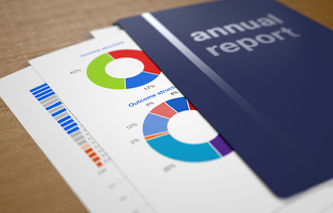Definition
The term Form 10-K refers to an annual report that summarizes the business and financial performance of a company. Form 10-K is a detailed document, which is produced by companies at the close of their fiscal year. The document contains a large number of audited financial statements that publically-traded companies are required to file with the Securities and Exchange Commission each year.
Explanation
Publically-traded companies are required by federal securities laws to disclose certain operating and financial information on an annual basis. Form 10-K is filed with the Securities and Exchange Commission (SEC) 60 days after the close of the company's fiscal year, while the Form 10-Q is filed three times each year. Companies will normally append their Form 10-K to their annual report. SEC rules also state companies are required to provide shareholders a copy of this report upon request.
Company websites will oftentimes contain both their current as well as historical Form 10-K and Form 10-Q documents; typically located in the "investors" section. The report itself includes a large volume of information, and contains more backup and supporting schedules than the company's Form 10-Q. The information appearing in a Form 10-K is also audited, while a 10-Q may contain unaudited information.
The following types of information can be found in a company's Form 10-K:
Business Background: the history of the company, number of employees, operating geography, and business segments.
Select Financial Data: management's discussion and analysis of financial condition, critical assumptions, and off balance sheet arrangements.
Financial Statements and Disclosures: income statement, balance sheet, statement of cash flows, discontinued operations, long-term investments, available-for-sale securities, goodwill, stock-based compensation, long-term investments, financial risk, and management activities.
Leadership: company directors, executive compensation, and corporate governance.
Other: accounting fees and services, controls and operating procedures, as well as exhibits and detailed notes to financial statements.










